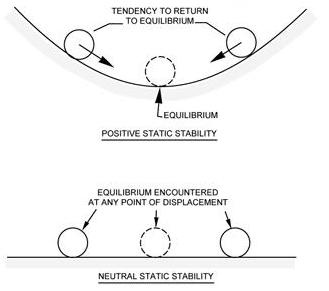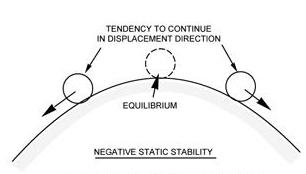

Since the airplane is flown in cruising flight most of the time, airplane manufacturers design the airplane with certain built-in corrections that counteract the left-turning tendency or torque effect during straight-and-level cruising flight only. This correction eliminates the necessity of applying constant rudder pressure. Because the effect of torque varies to such an extent during climbs and changes in angle of attack, it is impractical for airplane designers to correct for the effect of torque except during straight-and-level flight. Consequently, the pilot is provided other means such as rudder and trim controls to counteract the turning effect during conditions other than straight-and-level flight.
Many manufacturers “cant” the airplane engine slightly so that the thrust line of the propeller points slightly to the right. This counteracts much of the left-turning tendency of the airplane during various conditions of flight.
Other manufacturers, when designing the airplane, increase the angle of incidence of the left wing slightly, which increases the angle of attack and therefore increases the lift on this wing. The increased lift counteracts left-turning tendency in cruising flight. The increase in lift will, however, increase drag on the left wing and, to compensate for this, the vertical stabilizer is offset slightly to the left.
Torque corrections for flight conditions other than cruising flight must be accomplished by the pilot. This is done by applying sufficient rudder to overcome the left-turning tendency. For example, in a straight climb, right rudder pressure is necessary to keep the airplane climbing straight.
When thinking of “torque” such things as reactive force, spiraling slipstream, gyroscopic precession, and asymmetric propeller loading (“P” factor) must be included, as well as any other power-induced forces that tend to turn the airplane.
AIRPLANE STABILITY
Stability is the inherent ability of a body, after its equilibrium is disturbed, to develop forces or moments that tend to return the body to its original position. In other words, a stable airplane will tend to return to the original condition of flight if disturbed by a force such as turbulent air. This means that a stable airplane is easy to fly; however, this does not mean that a pilot can depend entirely on stability to return the airplane to the original condition. Even in the most stable airplanes, there are conditions that will require the use of airplane controls to return the airplane to the desired attitude. However, a pilot will find that a well designed airplane requires less effort to control the airplane because of the inherent stability.
Stability is classified into three types:
• Positive Stability
• Neutral Stability
• Negative Stability
Positive stability can be illustrated by a ball inside of a bowl. If the ball is displaced from its normal resting place at the bottom of the bowl, it will eventually return to its original position at the bottom of the bowl. [Figure 1-19]
Neutral stability can be illustrated by a ball on a flat plane. If the
ball is displaced, it will come to rest at some new, neutral position and
show no tendency to return to its original position. [Figure 1-19]
 |
 |